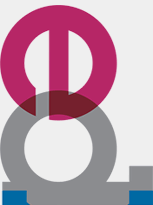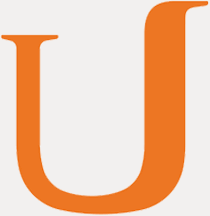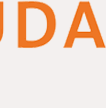Abstract
In this study the authors use Critel’s commonplaces about participation, specifically technology, to analyze the rhetoric of participation in massive open online courses (MOOCs), using syllabi and the user-agreement statements of three major MOOC providers. Key findings and contributions of their study are that (1) MOOC user agreements sometimes contradict and always supercede statements about participation in individual MOOC syllabi; (2) Critel’s commonplaces of participation are present in MOOCs and there are opportunities for more strategic situated practice and new knowledge; and (3) there is another commonplace for considering participation in larger technological and cultural contexts: infrastructure. They conclude that the rhetoric of participation in MOOC environments reveals contradictory, inconsistent, and, at times, problematic attitudes about the fundamental nature and value of participation in online learning environments.Navigation
In the spirit of a visual annotated analysis, inspired by Ben McCorkle’s "Annotated Obama Poster" in the journal Harlot, and in response to Johndan Johnson-Eilola's "Polymorphous Perversity in Texts" in Kairos, this chapter deliberately encourages readers to experiment and use non-linear exploration. Our navigation is intentionally designed to allow for playful wandering and non-linear engagement to represent our argument about MOOCs in a fully multimodal format.
Our chapter’s landing page uses an image map of several MOOC provider titles as the visual focal point and also as a primary method of navigation. To interact with the text, you can roll over sections of the MOOC provider titles and then click the highlighted part of the title. The following letters and phrases of the MOOC provider logos are clickable and take readers to content:
This launching imagemap contains icons leading outward one step to various sections of the text. Once within a specific section, another image map appears on the left of the screen annotated with individual words within a diamond shape. Each word is clickable and, again, highlighted when you roll over it. When you click its word, that second step takes you to content of each subsection of the text. Each subsection is intended to stand alone while providing a meditation on the various themes that emerged for us when exploring MOOCs.
From there, you can move back to the launch page by clicking the “Introduction” link at the top left of the page, or you may continue to click these icon links to move laterally within the text. This kind of navigation encourages exploration by readers who want to engage with multimodality. It also reinforces and illustrates our argument about the non-linear and even “wandering” experience of navigating and identifying moments of participation within the MOOCs sites themselves.
For a more linear reading and exploration, use the links at the end of each node page to move forward through the nodes.
To return to the launch page at any time, you can click on the "Introduction" link in the left sidebar. As an additional supplement, we also include an accessible .pdf version of this text, which can be downloaded at the following link: Harker_Hocks_Sansbury.pdf (.pdf).
 |
|||||||||||
 |
 |
||||||||||
 |
 |
 |
|||||||||
 |
|||||||||||
 |
 |
||||||||||
 |
|||||||||||
 |
|||||||||||
 |
 |
 |
 |
 |
|||||||
 |
|||||||||||
Introduction
In this study, we analyze the rhetoric of participation of three major massive open online course (MOOC) providers EdX, Coursera, and UDacity from the perspectives of Genevieve Critel’s topoi or commonplaces. Our analysis draws from recent reports on the effectiveness of MOOCS, syllabi, and the user-agreement statements of each provider. We assert that the rhetoric of participation in these environments reveals contradictory, inconsistent, and, at times, problematic attitudes about the fundamental nature and value of participation in online learning environments. Inspired by Critel’s project to complicate commonsensical understandings of participation, we question specifically the tendency to generalize broadly about participation, its effects, and the students that make participation in MOOCs possible.
Our inquiry aims—more than anything—to demonstrate the relevance, applicability, and general affordances of Critel's commonplaces in ongoing debates about the value of MOOCs in higher education. Our study offers an application of these topics to several general MOOCs and not a comprehensive sampling. Our sample (i.e., selection of particular MOOCs) and findings are not meant to be representative of all MOOCs. While we do not take up frequently discussed large MOOCs offered by Duke University and other institutions, we believe our examination sheds light on the dynamics of participation in MOOCs other studies of MOOCs have not addressed. We should note, however, that the light shed on participation in the context of this study raises more questions than answers. Illuminated by our examination is persistent evidence that the relationships among students, pedagogy, and the policies governing MOOCs are fundamentally complex, engagements complicated further by the pressures imposed by the expectations surrounding technology.
In her research, Critel addresses these relationships and expectations, noting how “cycles of technology hope and criticism” (195) loom over discussions about participation in our current moment. During times of hope, technology is understood to “mitigate the reluctance of some students to enact certain participatory acts in the classroom” (183). Technology critics, on the other hand, contend that technology hinders learning, degrades writing and curbs participation. Critel understands how both positions construct imprecise understandings about how technology impacts student participation. Instead of searching for consistent and verifiable consequences of participation, she offers the commonplace of technology as an ambivalent, liminal, and generative perspective from which to uncover the fundamental nature of participation in technological environments.
One aim of our study is to investigate MOOCs with the critical awareness and ambivalence present throughout Critel’s research. While Critel acknowledges the promise of technology to impact student interactions with participation in the composition classroom, she insists that this promise deserves critique. In this spirit, our findings have implications for scholars in composition and rhetoric because universities are increasingly considering MOOCs as a promising means for delivering content and providing instruction. As Critel's work forecasts, regardless of the setting, the idea of participation remains ambiguous, persistent, poorly defined, and difficult to assess. Key takeaways for our chapter are that (1) MOOC user agreements, to our surprise, sometimes contradict and always supercede statements about participation in individual MOOC syllabi; (2) Critel’s commonplaces of participation are present in MOOCs and there are opportunities for more strategic situated practice and new knowledge; and (3) our study identifies another commonplace for considering participation in larger technological and cultural contexts: infrastructure.